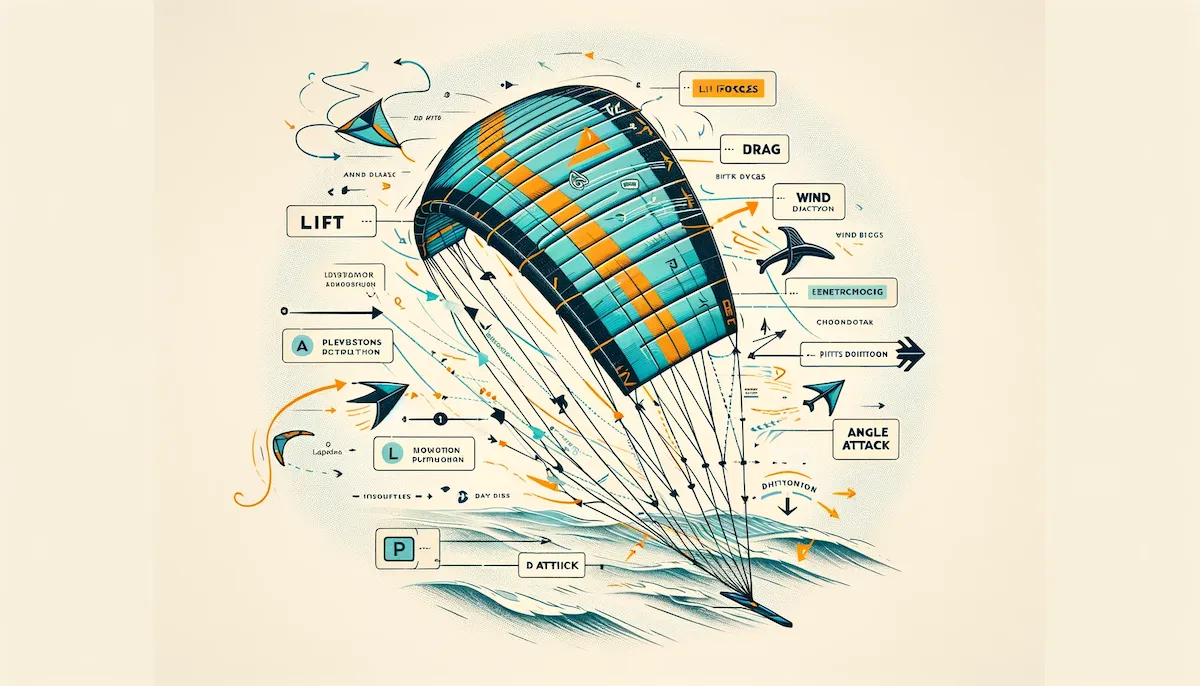Understanding How Kites Fly: Physics and Safety in Kitesurfing
Kitesurfing is not only a thrilling sport but also a fascinating application of physics. Understanding how kites fly is essential for both improving your kitesurfing skills and ensuring safety. This comprehensive guide explains the basic physics of kite flying and emphasizes important safety information.
Physics of Kite Flying
Lift and Drag
The two primary forces acting on a kite are lift and drag. Lift is generated by the wind flowing over the kite’s surface, allowing it to rise and stay in the air. For instance, when a kitesurfer moves at a speed that aligns with the wind direction, the kite's shape allows air to flow faster over the top surface, creating a pressure difference that results in upward lift. Drag, however, is the resistance the kite faces as it moves through the air. It's like the resistance you feel when you put your hand out of a car window; the force pushing against your hand is similar to the drag experienced by the kite.
Wind Window Concept
The wind window is the three-dimensional space where the kite can fly, shaped like a quarter-sphere. This concept is vital for controlling the kite. For example, when the kite is directly overhead, it's at the zenith of the wind window and has minimal pull. As it moves towards the edge of the window, the pull increases, which is essential for maneuvers like sudden turns or jumps.
Angle of Attack
The angle of attack is the angle between the kite’s chord line and the oncoming wind. Adjusting the angle of attack is how a kitesurfer controls the amount of lift generated by the kite. A higher angle of attack increases lift but also increases drag. For instance, tilting the kite leading edge away from you increases the angle, enhancing lift for a jump.
Calculating Lift
The lift of a kite can be calculated using the formula: Lift = (1/2) × Air Density × Velocity² × Lift Coefficient × Area. This formula shows how lift is directly proportional to the area of the kite and the square of the wind velocity. For example, if the wind speed doubles, the lift generated by the kite increases by four times, assuming other factors remain constant.
Safety Tips
Weather Awareness
Always check the weather forecast before kitesurfing. Avoid kitesurfing in storms or unstable weather conditions, as sudden wind changes can be dangerous. For example, an unexpected gust can cause loss of control, leading to accidents.
Equipment Check
Regularly inspect your equipment for any wear or damage. Ensure that your safety release mechanisms are functioning correctly. For instance, checking the kite for tears or the lines for fraying can prevent equipment failure during kitesurfing.
Training and Practice
Proper training is essential. Practice kite control in safe environments and gradually progress to more challenging conditions. Beginners should start with smaller kites in light winds to understand kite handling before moving on to larger kites and stronger winds.
Emergency Procedures
Familiarize yourself with emergency procedures. Know how to depower your kite quickly and how to perform self-rescues. For instance, practicing how to activate the kite’s safety system in a controlled environment can be life-saving during an actual emergency.
Respect for Others
Be mindful of other kitesurfers, swimmers, and beachgoers. Maintain a safe distance to prevent accidents. For example, giving right of way to other kitesurfers and avoiding crowded swimming areas helps in maintaining a safe environment for everyone.
Understanding the physics of how kites fly and adhering to safety guidelines are fundamental to enjoying kitesurfing safely and effectively. For more educational resources on kitesurfing, safety tips, and advanced techniques, visit our website.
